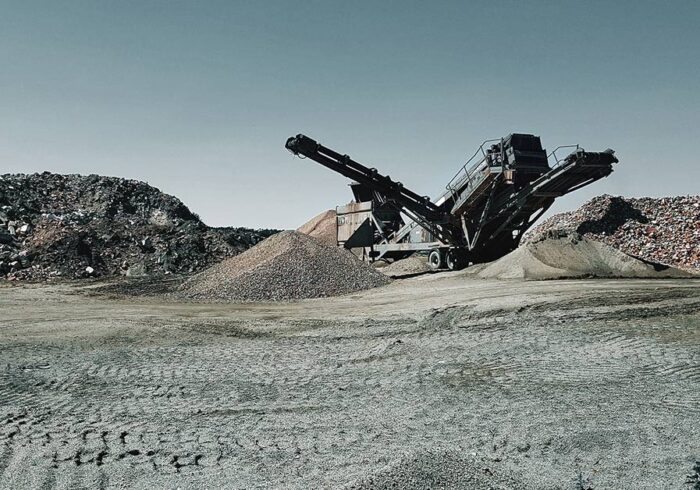Precision is key when it comes to the fast-paced automation lifestyle. Robot calibration services ensure that robots work with the highest level of accuracy and consistency. This blog details why calibration matters, how you can do it, and what benefits you get from calibrated robots!
The Importance of Calibration in Robotics: The Underpinnings
To Some, It Is Mere Calibration: A Complex Dance
In the field of industrial automation, where precision and reliability are king, robot calibration has been one of the most important processes. Before we really understand how complex robot calibration is, we need to understand the purpose behind it: to make the physical movements of a robot match what it should be doing in a virtual sense. This is more than just tweaking a few knobs — a systematic inspection and modification is required to ensure a robot performs its tasks with a high degree of fidelity. Calibration involves a series of steps including kinematics measuring, where we calculate what the orientation and position of the robot gears should be compared to reality (which you would record after performing a test). These are like stages of an elaborate dance, where a small misstep can result in a big mistakes in output.
Example: Robotic arm in automotive assembly plant When this arm is not calibrated properly, it can affect the degree of precision required for tasks like welding or painting. Inefficient as it seems, the consequences of erroneous calibration are far greater than that as it leads to faulty goods, higher production cost, and also safety hazards. Then there is the fact that calibration processes themselves vary greatly with respect to the robot type, application and the environment. So, the trick not only comes from running the calibration, but also knowing how sims and robotic contexts vary by the minute.
Difference Between Precision and Accuracy – Explained
In robot calibration, two terms commonly used interchangeably sound similar but are rather different in meaning: precision and accuracy. Precision describes how consistent measurements are, i.e. how closely multiple measurements of the same quantity agree with each other. Accuracy, however, refers to the closeness of the measurement to the true or accepted value. This can be a subtle difference, but has important implications for the way we operate robots. To ensure proper functioning, a robot has to be both precise and accurate — being precise means performing the same movement repeatedly, whereas accuracy means reaching the correct position or performing the expected task. For example, this dichotomy emerges vividly when we are calibrating robots to roll out challenging operations like surgery or behavior for complicated assembly tasks. A robotic assistant for a surgeon has to be able to drill into the right place to do a given procedure, but most of the time, it must also return to the same point time and again, reliably. Hence, the reason behind the importance of calibration; it provides robotics the tools to maintain both precision and accuracy, thus improving performance results. This distinction is critical for engineers and operators because it fundamentally modifies the risk-based strategy and associated tools used for calibration, which in turn affects the quality and safety of their automation processes.
Real Effects Of Automation Inaccuracy
One wrong calibration on a robot, though, you are talking about huge impact on the bottom line and in general, on the operational efficiency of plant as well. In manufacturing contexts, errors might cause defects that don’t show themselves until later in production — or worse, after the product has been sent to customers. A production line running on robots that are not well-calibrated is at risk of compromising both the physical quality of its output and its reputation with clients and consumers. For instance, in high-precision sectors like aerospace and automotive manufacturing, even a single defective part could mean loss worth thousands (if not millions of dollars), thanks to recall, rework, or warranty claims. In addition to the visible expenses of inaccuracy, hidden costs in the form of downtime when re-calibration is performed undermine the production schedule entirely. While any delay is disruptive to a supply chain, automation is based on quickness and precision, thus increasing the necessity for companies to leverage dependable robot calibration services. The risks associated with robotic errors in industries such as healthcare or dangerous environments introduce legal and ethical implications that demand utmost attention. And so, the price for thorough and regular calibrations rises not only to a best-practice but also to a fundamental support of safe and effective automation.
Tech Gummy: Trends and Innovations in Robot Calibration Techniques
Use the power of the AI and Machine learning to get a better calibration
Robot calibration embedded with artificial intelligence (AI) and machine learning comes to changing the landscape, enabling it to perform more accurate and adaptable to the circumstances calibration compared to before. The emergence of AI algorithms that can analyze large datasets (based on past robotic operations and calibration histories) enables answers to questions that previously would have been impossible to obtain. With these insights, engineers are able to calibrate models, predict when deviations might occur, and take corrective measures proactively, as opposed to reactively. A prominent feature is predictive maintenance which uses machine learning to predict the likelihood of a malfunction in equipment, based on historic data fitted into patterns. By using AI during calibration, manufacturers can identify issues that are likely to lead to inaccuracy before they occur, and significantly reduce the amount of downtime while improving overall productivity. Machine learning models possess the remarkable ability to refine calibration over time, making them an ideal candidate for industries that demand high precision, including manufacturing robotics, autonomous vehicles, and even surgical robotics.
Smart Tools and Equipment: New Additions to the Calibration Tool kit.
Smart Calibration tools have been developed using latest in technology advances to simplify and speed-up the calibration process. Such as advanced sensors, measurement instruments, and software systems that allow feedback directly during the process of calibration. Laser-based measurement systems, for example, come with very quick trained technology that enables technicians to collect data as opposed to using device technology that minimizes human error. Moreover, AR-based mobile apps are changing the way technicians carry out calibration. AR applications can project digital data on the real world and guide you through processes where extreme precision is involved – such as with calibration. Additionally, these new handhelds can also conduct various calibration methods ranging from geometrical checks to dynamic measurements, reducing downtime changing form one tool to another. This advancing not only makes the process efficient but also provides reliable calibration so that robots perform at their optimal operational level every time they are used.
For Real-time Calibration Monitoring, IoT Integration: The Future
Introduction to IoT-based Robotic Monitoring and Maintenance
Robobotic monitoring and maintenance over the Internet of Things (IoT) is a game-changer. IoT technology already plays a significant role in calibration, enabling real-time monitoring of robotic performance, enabling immediate adjustment when deviations are detected. With IoT platforms connecting robots, manufacturers are able to capture and analyze performance data as it is happening, allowing calibration strategies to be more dynamic and adaptable to changes in process. Such as, sensors embedded in robotic joint or parts may continuously monitor and send a data related to its working condition and will alert if any parameter skips outside the threshold level. Moving from reactive to proactive intervention dramatically improves reliability and productivity at the manufacturing floor level. In addition to the active data management capabilities, cloud-based data storage also provides the ecosystem in which calibration data can be shared & analyzed, which can be the next step towards the collaboration required between teams, or even different sites, to establish the necessary feedback loop to support the culture of continuous improvement. With Industries becoming more interlinked, the IoT-enabled calibration process is certainly going to play a key role in achieving operational efficiencies and setting new performance benchmarks for robotic operation across different sectors.
How To Select The Right Calibration Service For Your Needs
How to Differentiate Pros from the Pros: Evaluation of Professional Expertise
The quality of the robot calibration service provider is important too; it will make or break robotic efficiency and accuracy in a production line but only if trained professionals perform calibration. You should assess a provider from multiple angles — their technology and experience with the exact robotic systems you need. Specification of the calibration method can only be performed by experts not only with detailed knowledge of the calibration methodologies (ranging from the model-driven ones to the data-driven ones) but also of the specific application and environment of the robots the method has to be applied to. Also, providers need to show innovation in the calibration arena with tools like AI-powered technologies and IoT integration. An equally important indicator of a service provider’s dedication to quality is their certifications and adherence to industry standards. We can get more insight by verifying the customer reviews, or reading their case studies — the success stories tell a lot about the capacity of the provider to adapt to a particular challenge. You cannot just go by theoretical knowledge, and hence checking a potential service provider’s experience is essential to make sure that they have the ability to actually deliver.
Type of service: Know Your Calibrating Process
The calibration methods are very different according to type of robot, application and industry needs. This is why you must know the different calibration methods a service provider may offer. For instance, static calibration is used to compute the positional accuracy of a robot while it is static. Dynamic calibration is used to evaluate performance when the robot is moving. Equally crucial are other methods, like mechanical calibration using reference tools, and software-based calibration, which uses algorithms and statistical models. Both solutions offer clear benefits, but each is best suited for certain applications. Further, the robot calibration services provider should also be capable of offering a customized calibration service as per the operational requirements, improving the efficacy to deliver value-added services. Ask a calibration service how extensive their methods are and how they can accommodate the specific needs of your robot.
Price: The Sweet Spot between Cost and Quality
Cost factors play an important role in selecting one calibration service over another, but lower price point should not help you compromise on the quality and reliability. Business impacts brought by a price rate of calibration services should not have to sacrifice on performance standards. High-quality robot calibration services may seem expensive up front, but they save plenty of money in the long run by eliminating defects, reducing downtime, and improving overall productivity. Make sure to consider the TCO taking into account losses due to wrong calibrated instruments. This means that business should also seek service agreements specifying deliverables, response times and service maintenance provisions — these factors can all influence the service’s total value. Also, with flexible pricing models they can be accessible to many more businesses with different quality calibration service levels. The ultimate goal is to get maximum output from robot calibration services without going overboard on the expenditures; therefore, it is crucial to maintain a balance among cost and the quality of service provision.
When the Robotic Calibration Work? Success Stories 5-case Studies
Results That Matter: The Importance of Calibration
Effective robot calibration has potentially brought about transformative outcomes for companies across various industries, demonstrating how paramount of a role it has in operations. As an example, one automotive manufactuer had a persistent problem of weld defects which resulted in extended production waits. During investigations, it was found that their MIG welding robots were out of calibration which created inconsistencies in weld quality. This was possible by associating with a robot calibration services provider; then a complete assessment was performed, and advanced calibration methods were used. After calibration the weld defects reduced by more than 75% which improved product reliability as well as significantly improved customer satisfaction. It was not just able to spare the company the costs of rework and recalls; it also helped make the production more efficient going down to help the company’s bottom line. These case studies provide testimony to the importance of investing in good calibration services and why timing is so critical for quality assurance and operational efficiency.
Takeaways: What We Learnt from Calibration Fails
If successful calibration stories are exciting, failures are equally useful to examine. A company focusing on aerospace had put a lot of money into robotic assembly systems for aircraft parts. But they struggled with dimensional accuracy, as robot-generated parts regularly fell out of specification. They faced costly production delays and a shot reputation in the super-competitive aerospace business by discovering way too late that they had either skipped or inadequately performed their calibration process. It was a reminder that even in a high-stakes environment, the importance of good calibration practices cannot be overstated, and they should be conducted as everyday events. The take away for the company was that they must build a culture of precision and accountability around all the teams which are involved in robotic operations. Those are important lessons; they demonstrate the dangers of neglecting calibration processes and remind us that there are consequences for failing — one that not only jeopardises the output but also the sustainability of the business over time.
Sector Focus: Calibration Success Across Industries
Careful calibration of robots bestows unique advantages on different sectors, and a few highlights summarise its breadth of impact. Take the pharmaceutical industry, for example; Companies have utilized robot calibration to improve the precision of drug dispensing systems, which in turn guarantees that patients will receive the exact doses prescribed. The pharmaceutical industry is heavily regulated, and requiring high precision calibration is necessary. Further, calibration refinement for hygiene and operational efficiency has been made to packaging and palletizing robots used in food processing. Better calibration has helped the manufacturing firms to produce lesser waste and maintain the integrity of the end product, in the wake of the emerging needs for quality and safety among consumers. With industries moving towards automation, and robotics the highlights of good calibration practices over a diverse range of sectors not only proves it to be universal but also proves that the return of investment from good robot calibration services is indefeasible.





